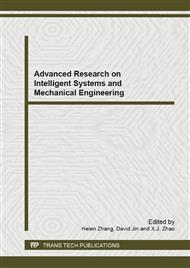p.37
p.42
p.47
p.51
p.56
p.60
p.64
p.68
p.72
Study on Sensor with Mechanical Properties in Nuclear Power Plant with Application of BP Neural Network to Fault Tolerant Control
Abstract:
All kinds of sensor with mechanical properties often can go wrong in nuclear power plant. In this kind of situation, it puts forward a kind of active fault tolerant control method based on the improved BP neural network. Firstly, the method will train sensor by BP neural network. Secondly, it will be established dynamic model bank in all kinds of running state. The system will be detected by using BP neural network real time. When the sensor goes wrong, it will be controled by reconstruction. Taking pressurizer water-level sensor as the case, a simulation experiment was performed on the nuclear power plant simulator. The results showed that the proposed method is valid for the fault tolerant control of sensor in nuclear power plant.
Info:
Periodical:
Pages:
56-59
Citation:
Online since:
January 2013
Authors:
Price:
Сopyright:
© 2013 Trans Tech Publications Ltd. All Rights Reserved
Share:
Citation:


